Embed presentation
Downloaded 378 times

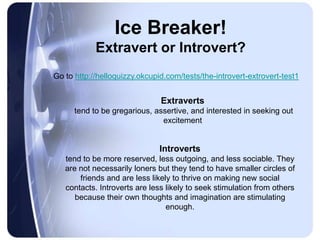
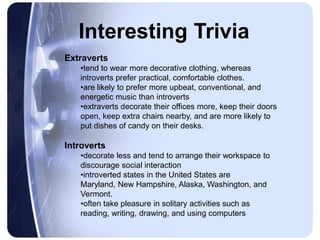

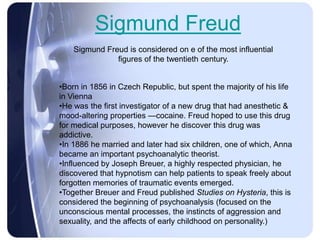
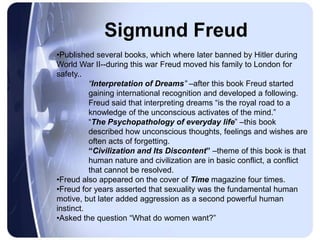
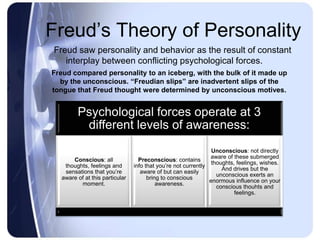

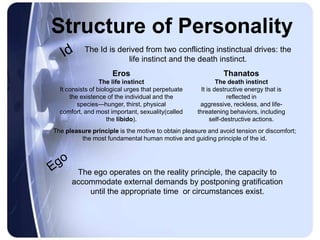
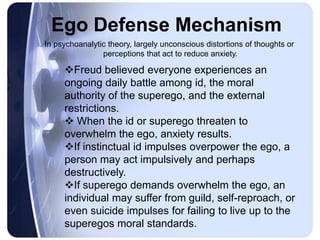




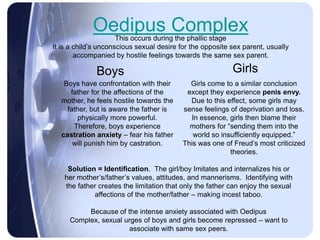
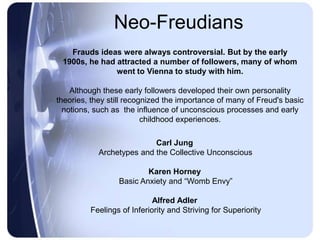

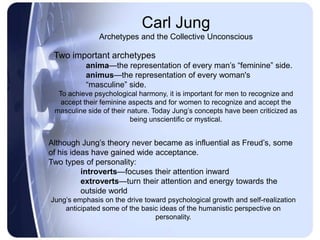

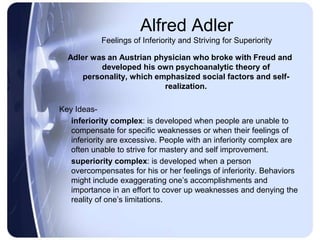

This document summarizes key aspects of Sigmund Freud's theory of personality and introduces some neo-Freudian perspectives. Freud saw personality as resulting from the interplay between the id, ego, and superego. He proposed psychosexual stages of development and defense mechanisms like repression. Critics argued Freud's ideas lacked evidence and were sexist. Neo-Freudians like Jung, Horney, and Adler built on Freud's work but emphasized social factors and striving for growth over sexuality. Jung introduced concepts like archetypes and the collective unconscious. Horney stressed cultural influences and basic anxiety. Adler focused on inferiority complexes and superiority complexes.




















